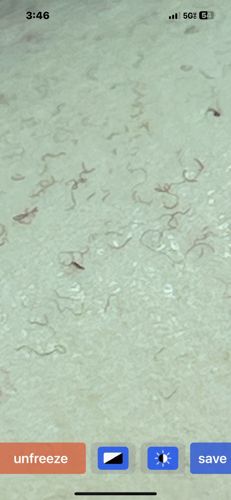Sarcoptic mite (or scabies mite)
Scientific Name: Sarcoptes scabiei
Order & Family: Acari, Sarcoptidae
Size: Females are typically 0.3-0.45 mm long and 0.25-0.35 mm wide; males are about half that size.

Natural Habitat
The mites burrow into the upper layer of the skin of their mammalian hosts, including humans. They are found globally.
Diet & Feeding
They feed on skin cells and tissue fluids within the burrows they create.
Behavior Patterns
Female mites burrow into the skin to lay eggs. Eggs hatch into larvae, which mature into nymphs and then adults over 10-17 days. The mites cause intense itching, especially at night, and characteristic red rashes and burrows on the skin. They are obligate parasites, meaning they cannot survive long off a host.
Risks & Benefits
Potential risks include intense itching, skin irritation, secondary bacterial infections due to scratching, and in severe cases (crusted or Norwegian scabies), widespread skin lesions. They are purely parasitic and pose no known benefits to humans or the ecosystem.
Identified on: 9/17/2025